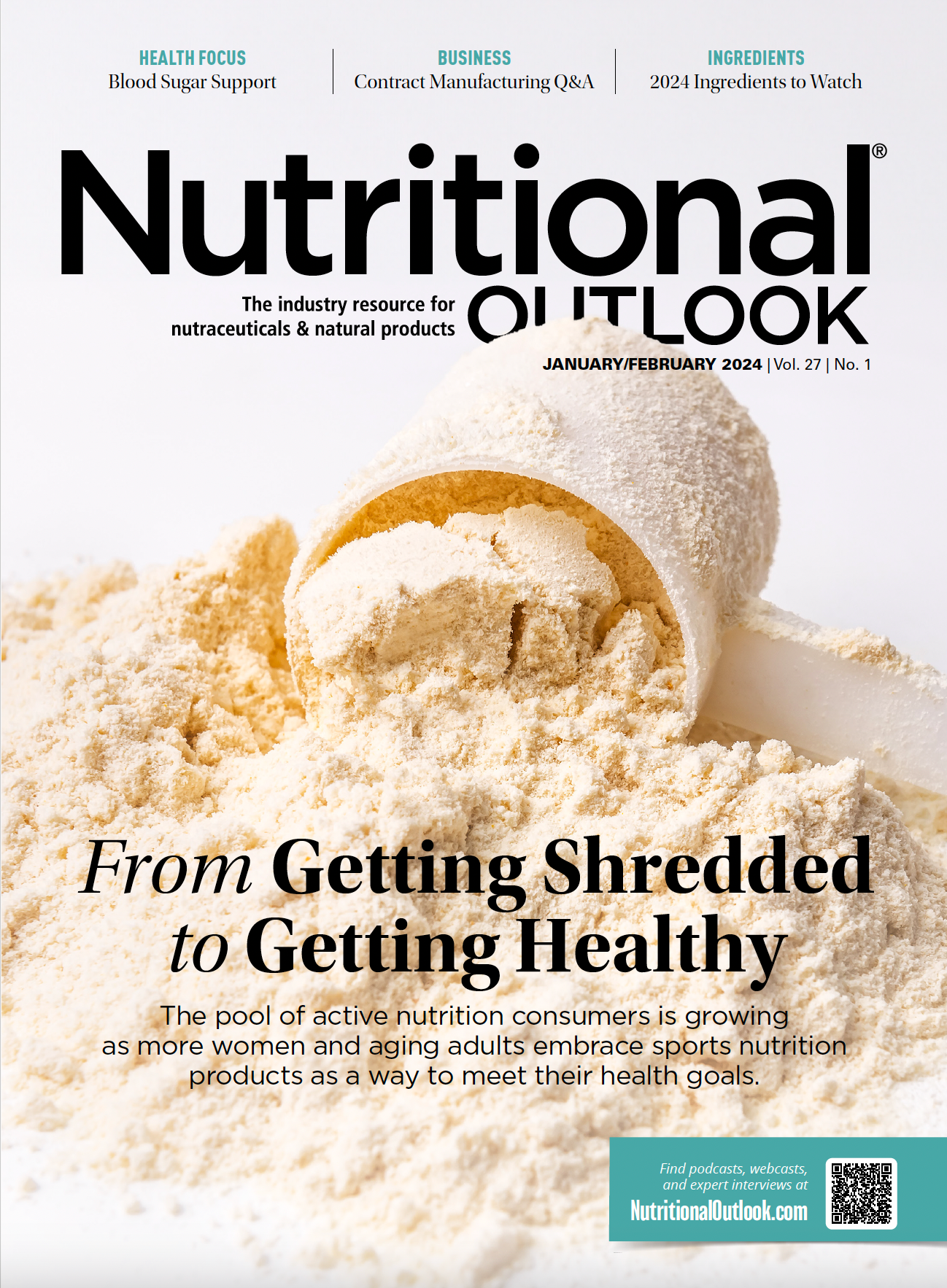Mushrooms are booming
The profile of mushrooms is growing but more education may be needed for consumers to differentiate between different species.
Photo © AdobeStock.com/Paitoon

Mushrooms are no longer just a culinary ingredient. More consumers recognize that dietary supplements made from fungi may offer a wide range of health benefits, and are willing to give them a try. According to data from SPINS, in the 52 weeks ending Dec. 3, 2023, mushrooms were among the top 25 best-selling ingredients in the natural channel, with 28% sales growth compared to the previous year. Within the natural channel, mushrooms were the best-selling ingredient in the cognitive health category, experiencing 42% sales growth compared to the previous year, with the specific mushroom Reishi also finding a spot in the top-selling cognitive health ingredients, and 21% sales growth from the previous year.
Mushrooms are also just below vitamin C as a best-selling immune health ingredient in the natural channel, with modest 6% sales growth. Reishi is also in the top ten ingredients of the immune health category, but experienced an 8% decline in sales compared to the previous year. This may have to do with a declining interest in immune health more broadly as consumers shift their interest to other health concerns, namely cognitive health performance. This is particularly the case in the cognitive health category of the mainstream supplement channel, where mushrooms saw a 115% growth in sales compared to the previous year.
The growing popularity of mushroom products also means that there needs to be greater clarity in the labeling of mushroom-based products. “I still don’t think that many people know the different types of mushrooms and what they do. But there is a general acceptance now of mushrooms that I don’t think was there before,” said Scott Dicker, market insights director for SPINS. This greater acceptance, says Dicker, can be attributed to the use of mushrooms across multiple dosage formats. “When [ingredients] cross over from being a supplement ingredient into functional beverages, into functional food, that really allows people to accept it when they see mushrooms in their coffee products or in their granola or their protein bar. This really mainstreams it,” he explains.
It’s therefore important for industry to leverage that consumer acceptance and raise awareness about the various mushroom species and their benefits when used in these supplement and functional food or beverage formulas. Transparency on product labels is a great first step toward this goal. Recently, industry stakeholders such as the Natural Products Association (NPA; Washington, D.C.) and Nammex (Gibsons, BC, Canada) filed Citizen Petitions with the Food and Drug Administration (FDA) asking the agency to update labeling guidelines so that the ingredient deck declares the fungal parts used in the product as well as what fungus they came from. There is such a wide range of fungi, not all of which impart the same benefits, and consumers would benefit from knowing what exactly they are consuming.
Nammex, for its part, argues that the way lay consumers understand mushrooms is different from how industry stakeholders may understand mushrooms. For example, lay consumers generally think of mushrooms as the fruiting body, which is the part typically used in culinary applications, while dietary supplement manufacturers may use the fruiting bodies, mycelium, or both in their extraction process. So, while the whole organism may be scientifically understood as a mushroom, Nammex argues that marketing a product as being made with “mushroom mycelium,” for example, is misleading compared to labeling something as made with mycelium from a specific fungal species. According to the company’s recent consumer survey, most consumers cannot even identify mycelium in a photograph, or understand that it may be grown a grain substrate, which is often undisclosed.
Ultimately, as the category grows, manufacturers need to communicate to consumers with accuracy the fungal ingredients being used to differentiate themselves from other products marketed as mushroom extracts. This will benefit manufacturers in the long run when consumers become more savvy. Dicker foresees continued growth of the category, but it may take some time.
“I think we might see a plateau for some of the mushrooms before a larger boom, and that’s just because I think there’s confusion around kind of what they’re good for,” he explains. “There’s still a health halo around them, but I think it might take a little more time for that education.”
To learn more about our Ingredients to Watch, listen to our conversation with SPIN's director of market insights, Scott Dicker, on The Nutritional Outlook Podcast.

Kaneka Nutrients to unveil new consumer research on menopausal women at Vitafoods Europe 2024
April 26th 2024The company will reveal the results of the research that is based on live feedback from 200 menopausal women who took 200 mg per day of Kaneka Ubiquinol over two-months, monitored the effects, and recorded their observations.
Rousselot to showcase new collagen peptide research and targeted solutions at Vitafoods Europe 2024
April 25th 2024The company will be highlighting new research that demonstrates the ability of its Peptan collagen peptide brand to support sleep quality, reduce gastrointestinal discomfort, and enhance skin health, including density, hydration, and elasticity.